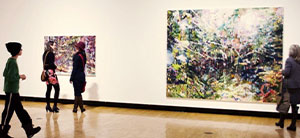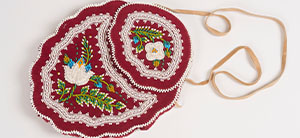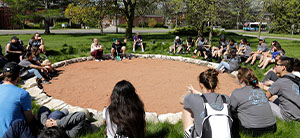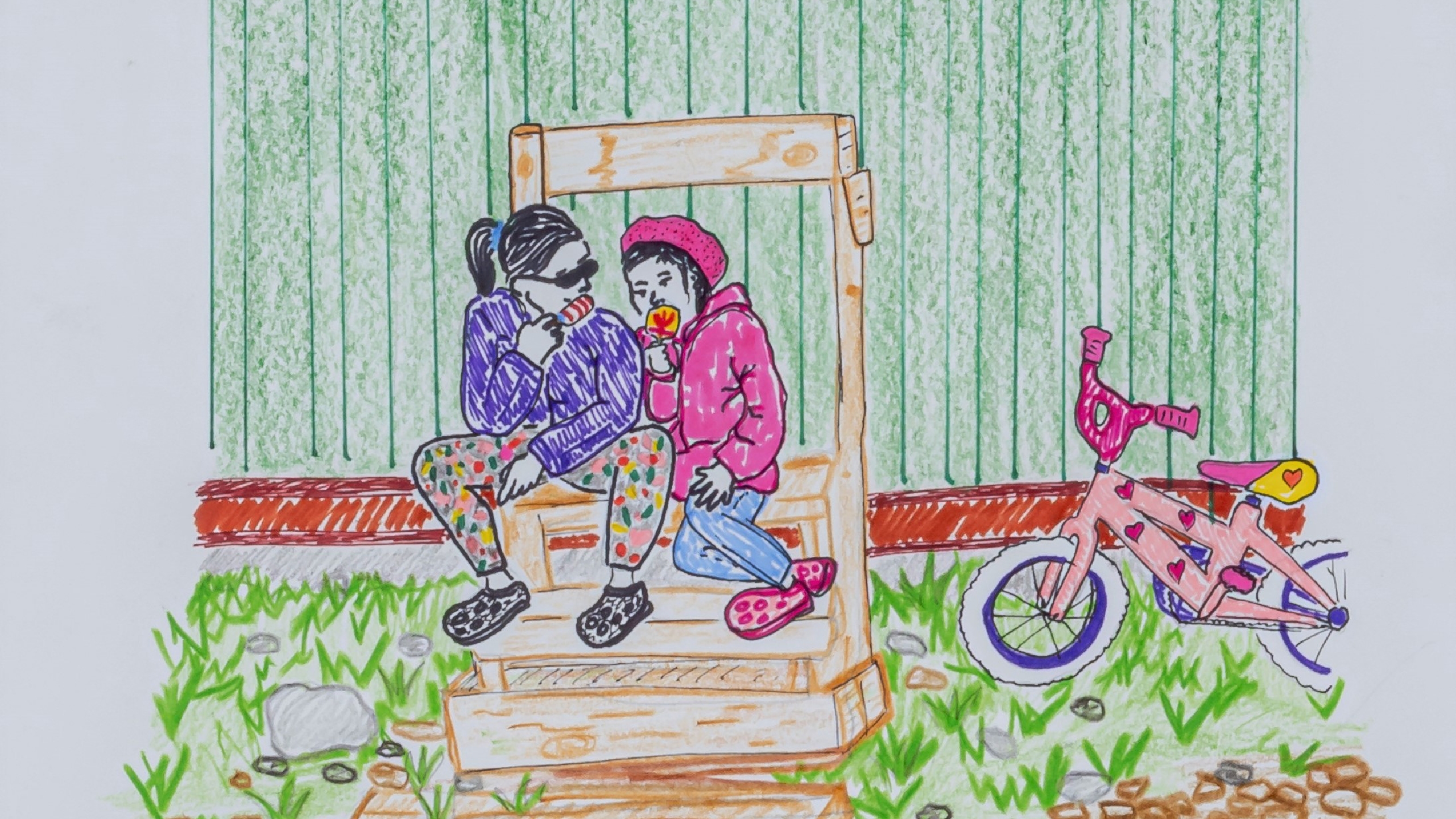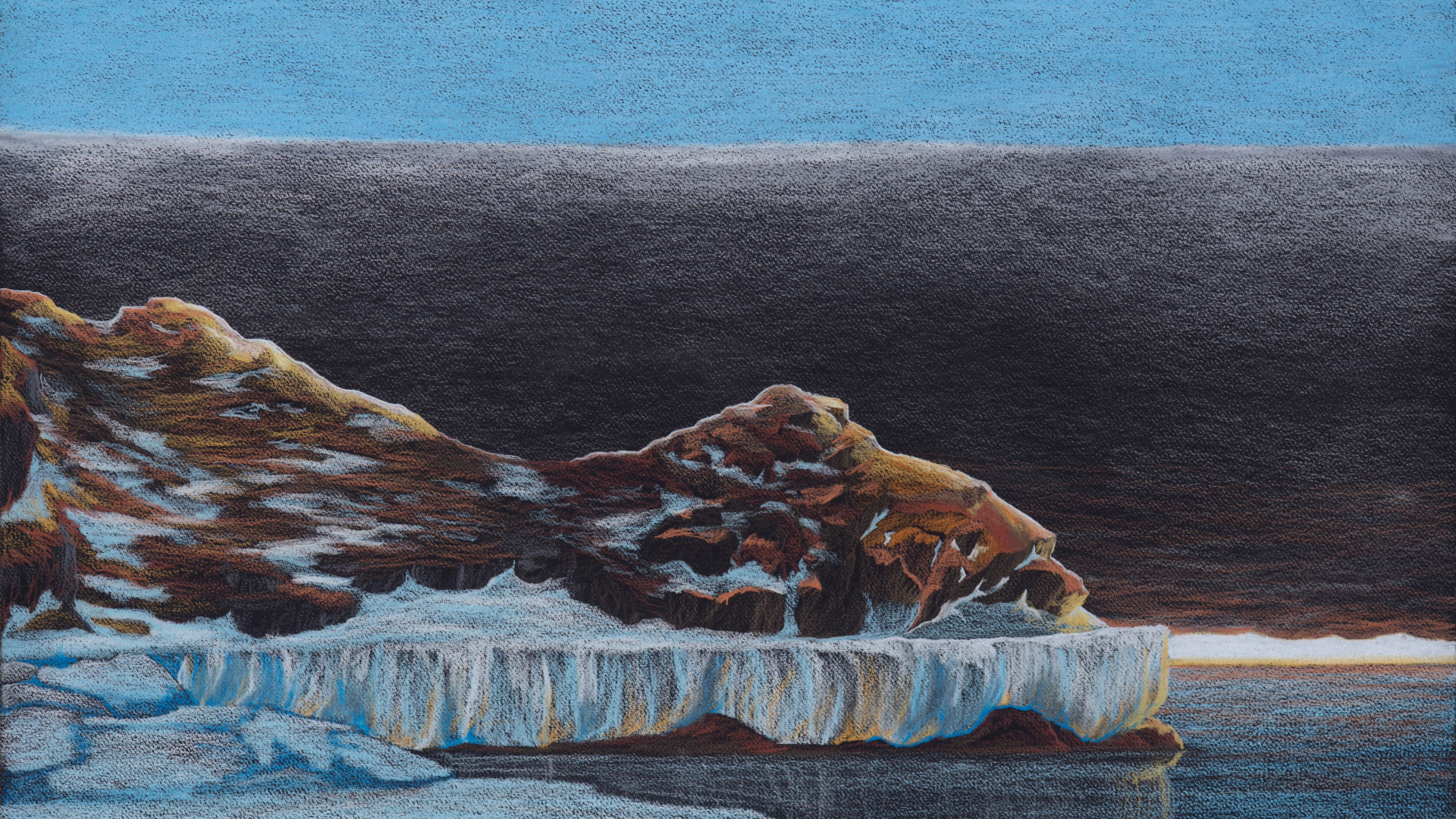
ᑕᐅᑐᑉᐹ Tautuppaa | Long Looking
Tim Pitsiulak
Taqralik Partridge
It is the exceptional level of detail that immediately captures one’s attention in Tim Pitsiulak’s artwork, and this deliberate attention to detail was a fundamental aspect of his artistic philosophy. As he put it, “That’s the best thing about being an artist and a hunter. What more can I ask for than that people are noticing what we have up here?” His artistic and hunting pursuits were intricately intertwined, both stemming from his practice of “long looking,” reflected in the precise balance of detail and distance in his work. He believed in the significance of prolonged observation and reflection, which allowed him to capture intricate details and the essence of his subjects in meticulous representations of the northern landscape, wildlife, and way of life. Through this patient and thoughtful approach, he brought a profound sense of connection and depth to his practice.
For Pitsiulak, art and hunting represented parallel ways of perceiving and comprehending the world around him, encompassing the vast expanse of the land and its diverse ecosystems, including its wildlife, fish, trees, and water, while encapsulating both traditional and modern aspects of life in northern regions. Born in Kimmirut and later residing in Kinngait, he balanced his time between Kinngait Studios and the wilderness. His artwork was deeply rooted in his intimate knowledge of his homeland, expressed in a wide range of subjects that blend details drawn from traditional stories and the natural world with elements of contemporary technologies—often executed in vibrant coloured pencil, ink, and chalk pastel on large black paper sheets.
Throughout, his artistic practice brings into sharp relief the ever-evolving impacts of colonization in the North, particularly the effects of climate change and environmental exploitation. While Indigenous communities globally have faced heightened risk due to their close relationships and interdependence with wider ecosystems, the Inuit, in particular, are uniquely vulnerable due to the increasing precarity of northern environments as climate stability gives way to the planet-scale impact of human actions associated with the Anthropocene. Tim Pitsiulak’s work serves as a critical entry point into understanding not just life in the Arctic but also the profound and deep-rooted connections between individuals and their surroundings in an environment defined by its extreme climatic conditions.
This exhibition draws from two private collections, as well as that of the Art Gallery of Guelph, providing a comprehensive view of Pitsiulak’s distinctive artistic practice and imagination. His work is complemented by pieces from other Inuit artists who similarly focus on the intersection of lived and natural worlds.
Curated by Taqralik Partridge and organized by the Art Gallery of Guelph with the generous support of lenders and the Department of Canadian Heritage.
ᑕᐅᑐᑉᐹ
Tautuppaa : l’observation prolongée | Tim Pitsiulak
Quand on regarde les œuvres de Tim Pitsiulak, on remarque immédiatement leur niveau de détail exceptionnel. Cette attention délibérée portée aux détails était un aspect fondamental de la philosophie artistique de Pitsiulak. Celui-ci a déclaré un jour : « C’est l’avantage d’être à la fois artiste et chasseur. Que puis-je demander de plus que de voir que les gens remarquent ce que nous avons ici? » Ses activités d’artiste et de chasseur étaient intimement entremêlées, émanant toutes deux de sa pratique de « l’observation prolongée », qui transparaît dans l’équilibre précis qu’il trouve entre détail et distance dans ses œuvres. Pitsiulak croyait en l’importance de l’observation et de la réflexion prolongées, qui lui permettaient de saisir des détails complexes et de capturer l’essence de ces sujets dans des représentations méticuleuses des paysages, de la faune et de la flore, et du mode de vie du Nord. Grâce à cette approche patiente et réfléchie, il a su instiller de la profondeur et un intense sentiment de rapprochement dans ses créations.
Pour Pitsiulak, l’art et la chasse constituaient des manières parallèles de percevoir et de comprendre le monde autour de lui, englobant la vaste étendue de terre et ses divers écosystèmes, y compris les espèces sauvages, les poissons, les arbres et l’eau, tout en incarnant les aspects à la fois modernes et traditionnels de la vie dans les régions du Nord. Né à Kimmirut, Pitsiulak a ensuite vécu à Kinngait, partageant son temps entre les ateliers de Kinngait et la nature. Ses œuvres sont fortement ancrées dans sa connaissance intime de sa terre natale, exprimée dans un vaste éventail de sujets qui mêlent des détails tirés des histoires traditionnelles et du monde naturel avec des éléments des technologies contemporaines. Elles sont souvent exécutées sur de grandes feuilles de papier noir avec des crayons de couleur, de l’encre et des pastels aux couleurs chatoyantes.
Sa pratique artistique met clairement en évidence les incidences en perpétuelle évolution de la colonisation dans le Nord, en particulier les effets du changement climatique et de l’exploitation environnementale. Certes, partout dans le monde, les communautés autochtones font face à un risque accru en raison de leur étroite proximité et de leur interdépendance avec leur écosystème, mais les Inuits sont particulièrement vulnérables à cause de la précarité grandissante des environnements nordiques tandis que la stabilité climatique cède la place aux incidences planétaires des activités humaines associées à l’Anthropocène. L’œuvre de Tim Pitsiulak est un point d’accès critique pour comprendre non seulement la vie dans l’Arctique mais aussi les connexions étroites et profondément enracinées entre chaque individu et ce qui l’entoure, dans un environnement défini par ses conditions climatiques extrêmes.
Cette exposition s’appuie sur deux collections privées ainsi que sur celle de l’Art Gallery of Guelph, donnant une vision complète des œuvres de Pitsiulak et de son imagination. Ces œuvres sont complétées par des œuvres d’autres artistes inuits qui, comme Pitsiulak, se trouvent à l’intersection entre le monde propre et le monde naturel.
Conçue par Taqralik Partridge et organisée par l’Art Gallery of Guelph avec le généreux soutien des prêteurs et du ministère du Patrimoine canadien.
Image detail: Tim Pitsiulak, Kinngait Point, 2016, coloured pencil on paper, 76.2 x 55.9 cm. Private collection. Photo: Martin Schwalbe

This project is funded by the Government of Canada.
Gallery
View More Exhibitions
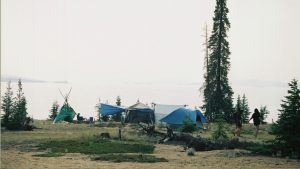
exhibition
September 18.2025 / January 4.2026
Challenging colonial conceptions of how Land and Water are used, valued, and protected, Reworldings speaks to living relationships with place and peoples, to the interdependence of species and systems, and to the urgent need to restore not only ecosystems, but justice.

exhibition
September 18.2025 / January 4.2026
Through practices that span net art, interactive sculpture, installation, video, and textile, Soft Internet Theory invites audiences to consider a gentler, more human digital future.

exhibition
May 22.2025 / August 29.2025
Fuzzy Thinking explores how textiles’ softness and tactility challenge boundaries between art and craft, weaving together historical and contemporary works rooted in material and cultural complexity.
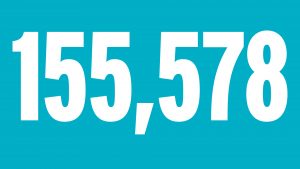
exhibition
May 22.2025 / August 29.2025
Curated through an open call, artists from across Guelph were invited to share their work in a collective reflection of the city’s creative landscape.
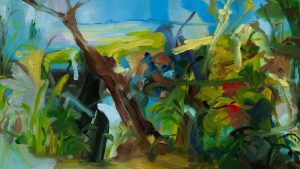
exhibition
May 3.2025 / May 8.2025
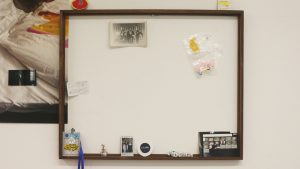
exhibition
April 24.2025 / April 29.2025
Through photography, Bahar Enshaeian unravels the intricate layers of memory, identity, and belonging. Rooted in personal experience, her work speaks to the complexities of migration, displacement, and the search for home.

exhibition
April 10.2025 / April 15.2025
What utility can we find in vestiges of the past? This question shapes Hal Fortin’s interdisciplinary practice and its distinct sculptural language, punctuated by humour, dream logic, and the rhythms of domestic labour.

exhibition
April 2.2025 / April 6.2025
At the heart of Stephanie Fortin’s practice is an ethical inquiry: is it necessary—or responsible—to aestheticize waste in the context of global exploitation and climate change?


